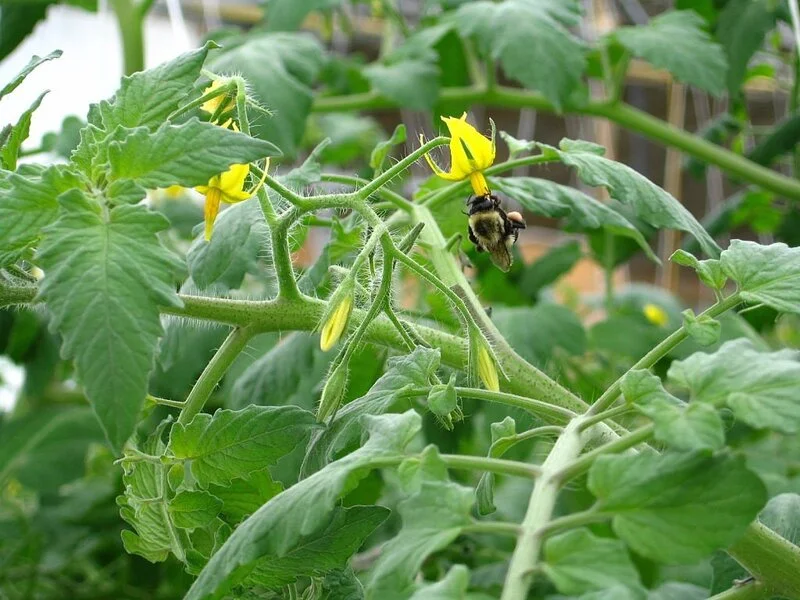We frequently stop to admire the vivid hues and lovely shapes of the flowers and fruits while we are in a garden. The flowering of tomato plants, a definite indicator that delectable tomatoes are on the way, is one of these lovely sights. However, are you aware of what goes on behind the scenes? How do those blossoms become ripe tomatoes? This article will delve deeper into the enthralling process of tomato flower pollination.
Understanding Tomato Flowers
The covert agents of the plant world are like tomato plants. They have a unique task, which is to grow tomatoes. However, they must first flower in order to do that. The blossom on a tomato plant is a way for it to announce that it is prepared to produce tomatoes. The pollination magic takes place in these flowers.
Male and female components are present in every tomato bloom. The stamen, which is the male component, produces pollen, the minuscule yellow grains required for fertilization. The pistil, which is the term for the female portion, has a stigma ready to catch the pollen. The way is open for the flower to become a tomato after the pollen reaches the pistil.
The Role of Pollination in Tomato Production
So why is pollination such an important process? Well, we wouldn’t have any tomatoes without pollination! Yes, the crucial process that results in the development of a tomato from a tomato flower is pollination. Similar to a relay race, the pollen must reach the pistil in order for the next runner to get the baton and finish the race to produce a tomato.
Pollen grains enter the pistil of a flower during pollination and fertilize it. This starts a series of events that eventually result in the tomato fruit growing. Consider this analogy: the flower is the oven, and the pollen is the heat that bakes the tomato cake.
How Tomatoes Are Pollinated
You may be curious as to how pollen travels from the stamen to the pistil. I’m glad you asked that! This can occur in a variety of ways, including with the aid of wind, water, or pollinators like bees.
Tomato plants, however, have a hidden ability: they are capable of self-pollination. This is because, as we discussed, there are both male and female organs in a tomato flower. Pollen is usually transferred from stamen to pistil by being gently shook off of them by the wind or a visiting bug. The term “self-pollination” describes this phenomenon.
Signs of Successful Pollination in Tomato Flowers
Want to know if the pollinators have made it to your tomato flowers? There’s an easy test for that! The flower begins to evolve shortly after being pollinated. The flower’s petals begin to wither and fall off, and a little green bulb called an ovary develops at the flower’s base. Your tomato has just sprouted! If you notice this, then your flower has been successfully pollinated.
What to Do If Your Tomato Flowers Are Not Pollinating
Even if the conditions are ideal, tomato blooms may not be pollinated. This could be because the temperature is too low, or the wind isn’t strong enough to ruffle the blossoms. Don’t fret, though; you can lend a hand to your tomato plants.
You can delicately touch the stamen and then the pistil of each flower, or you can use a small paintbrush or even your finger. By spreading the pollen in this way, pollination rates may increase. Don’t be careless, though; the blossoms are fragile.
Conclusion
In any case, there it is! You now know how pollination occurs on tomato blooms, how to identify if pollination was successful, and what you may do to facilitate pollination if necessary. Don’t give up if your first few gardening attempts are unsuccessful; success takes time and practice. You’ll become a tomato pollination pro with enough study and experience.


